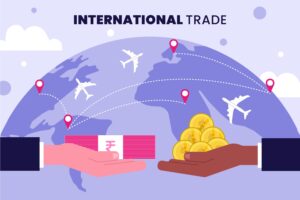Recently, the United States’ new round of tariff policies has triggered a shockwave across global trade, severely impacting international logistics and the shipping industry. Many shippers have paused deliveries, U.S. importers have postponed or canceled orders, and freight forwarders have stopped booking shipments, causing widespread disruption in the supply chain.
According to data, the volume of containers shipped to the U.S. plummeted from 516,000 TEUs to 169,000 TEUs within a week—a staggering 67% drop. On the Asia–U.S. West Coast route, volumes fell from 148,000 to 54,000 TEUs. Meanwhile, the Ningbo Shipping Exchange freight index continues to decline, with West Coast rates falling 2.3% in a single week and East Coast rates dropping 0.5%. In an attempt to stabilize prices, shipping companies have cut 30% of trans-Pacific capacity, but the slump in volume continues.
Approximately 40% of shipments from China to the U.S. have been paused due to the new tariffs, and cross-border e-commerce exports are expected to fall by up to 50%. To avoid tariff rates as high as 125%, air freight costs have skyrocketed. Pre-booked rates from Los Angeles to Shanghai have surged to $2/kg, with last-minute bookings exceeding $5/kg. Some East Coast routes are reportedly reaching $11/kg.
On social media, many factories have reported suspending production for U.S. orders. Sellers are sharing similar messages: “Our last U.S. buyer just canceled shipments,” and “Custom orders have also been paused.” The unpredictability of U.S. trade policy is now seen as a greater threat than the tariffs themselves.
Industry insiders emphasize that 90% of Chinese e-commerce exports to the U.S. rely on sea freight, not air freight as commonly believed. The new regulations are expected to hit air cargo the hardest, potentially shrinking the sector significantly.
As the U.S. market becomes increasingly unstable, more Chinese sellers are exploring alternative markets—Europe being the top choice. According to a recent survey, 61% of cross-border sellers plan to focus on the European market. The U.K. and Germany are the most favored destinations, each receiving 12% of seller interest. France, Italy, and Poland also show growing potential due to their diversity and demand.
Carry, an Amazon seller based in Shenzhen, said that tariffs forced him to raise product prices in the U.S. by 30% and reduce ad spending by 40%. “We can no longer rely on the U.S. market,” he said. “We’re now allocating more resources to Europe, Canada, and Mexico.” He noted that two of his fellow Amazon sellers have already decided to withdraw from the U.S. altogether.
Though Europe presents challenges such as high entry costs and complex VAT regulations, sellers are drawn by the lighter competition and higher profit margins. Some sellers point out that unlike the U.S., where volume can grow quickly, Europe requires multi-country operations to achieve scale. Still, many see it as a worthwhile investment.
However, concerns remain. Some sellers note that fees in Europe—VAT, platform commissions, fulfillment, and delivery—can take up to 70% of revenue, leaving slim margins. Still, others argue that with exchange rate gains and lower competition, profits in Europe can be attractive. “With the dollar exchange rate shifting, we’re making over 1,000 RMB in profit per day—no problem,” one seller claimed.
In conclusion, faced with U.S. tariff volatility, more Chinese cross-border sellers are turning toward Europe. Despite its own set of challenges, the European market offers a strategic alternative for risk diversification and long-term growth.








